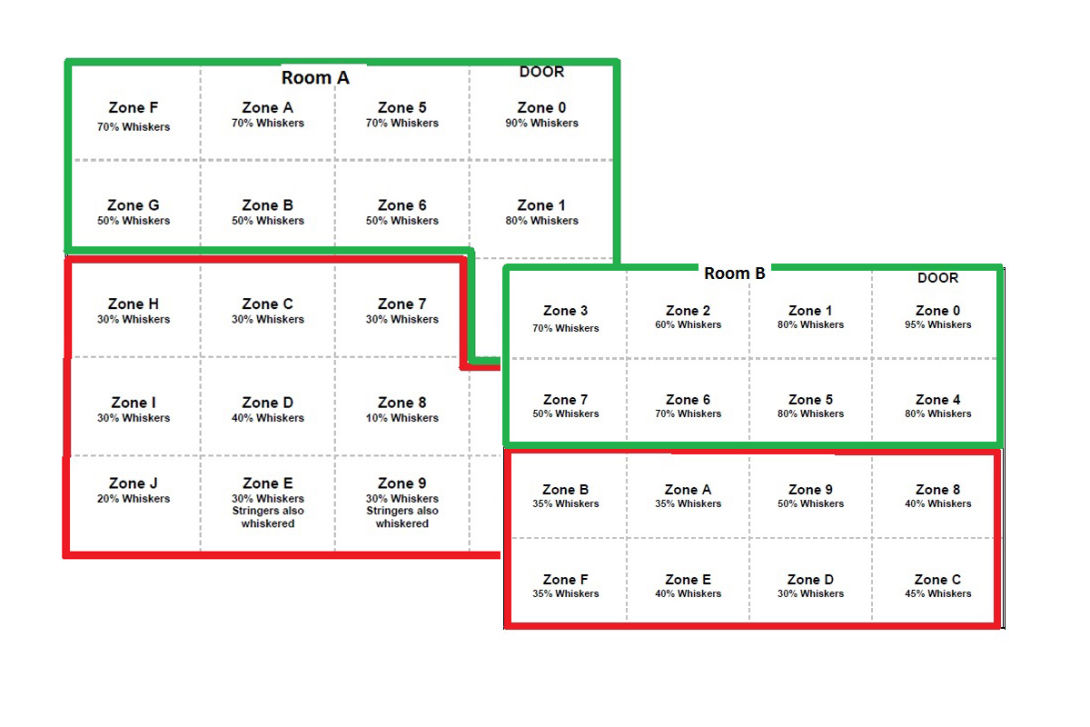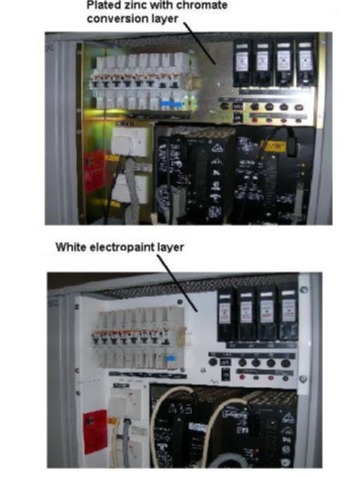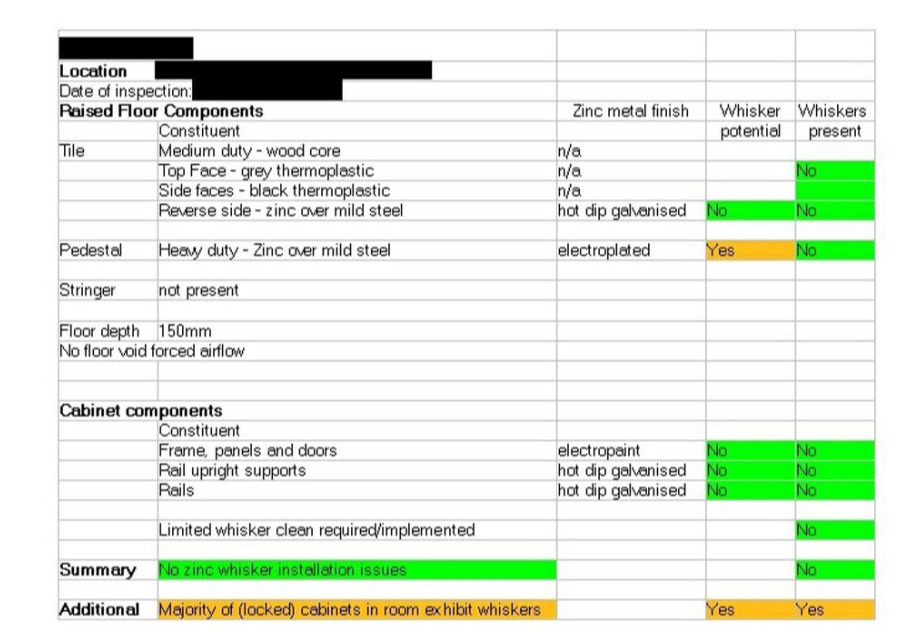Solving Clients' Problems with Zinc Whiskers - Case Studies
Client wanted to know which equipment was vulnerable to zinc whiskers induced interruption
After establishing the extent of the zinc whiskers problem, we looked at airflow and location of equipment. In [Room A], zones 0 - 2, 5 and 6 were very congested, access to the floor void was limited but because the equipment type was of low susceptibility to damage and the area had low airflow, it was unlikely that whiskers would present a reliability issue. Similarly, zones A, B, F and G contained equipment that was largely unaffected by whiskers. The remaining areas had sufficient airflow, contained approximately 40% whiskered tiles and contained equipment known to be susceptible to damage by zinc whiskers. These areas needed to be addressed in any whisker remediation. In [Room B], a similar demarcation was made. The end of the room nearest to the entrance was likely to suffer little from damaging effects of zinc whiskers because it contained no susceptible equipment. The area farthest from the entrance contained susceptible equipment and whisker removal was strongly recommended. Together with the client, and using this information, we developed and delivered a targeted decontamination plan that addressed their business needs.

Mysterious exploding power supplies
The client had upgraded air handlers to increase cooling capacity which then increased the airflow speed through the floor void. Very shortly after, power supplies starting failing at an alarming rate; 15 in 24 hours. We were called in, diagnosed the problem very quickly as zinc whisker contamination and found zinc whiskers coating the underside of floor tiles. We cleaned as soon as the client arranged access, and the client experienced no further problems.
Advising client on less susceptible materials
While engaged to do a particle contamination survey, our expert noticed an electroplated telephone switch which, upon closer examination with a bright light, appeared to be growing zinc whiskers. As a result of being advised, the client was able to ensure that all future purchases used an electropainted finish.

Client wanted to understand the extent of zinc whiskers in rooms before a major upgrade
A client was planning a major refurbishment and asked for a zinc whiskers survey of a number of sites before the rooms were disrupted. We carefully inspected tiles, stringers, cabinet components (frame, uprights, rails) within a specified distance of the proposed refurbishment and then inspected at sample locations throughout the rest of the room. We found that only the pedestals were electroplated and therefore, presented a risk of growing zinc whiskers. We suggested that, as the pedestals were already installed, they be cleaned, and then watched and reviewed in a year. We also reported to the client any other anomalies we found in the rooms at the time of inspection.

